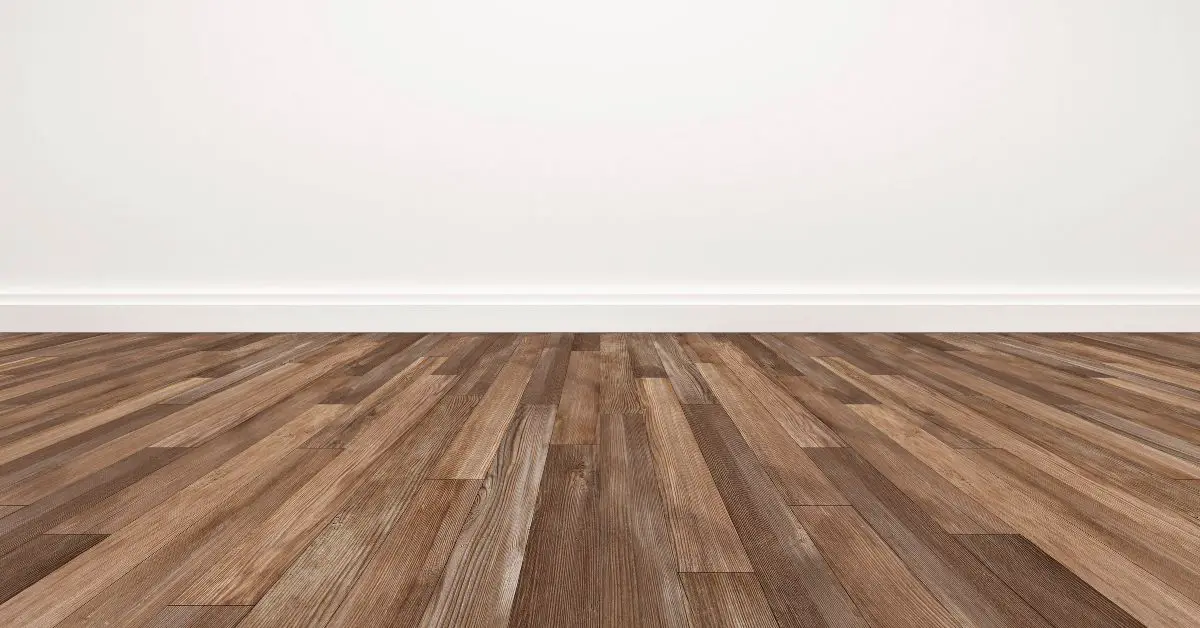Humidity serves as a silent yet potent force shaping the fate of wood floors, a staple feature in many homes renowned for their timeless elegance and warmth. High humidity invites moisture absorption. Conversely, low humidity prompts wood to release moisture. So what’s the best humidity for wood floors?
The optimal humidity range for wood floors typically falls between 35% and 55%. Within this range, wood floors are less prone to detrimental effects such as swelling, warping, or shrinkage. Maintaining humidity within this balance ensures the longevity and aesthetic appeal of wood flooring.
In this guide, I’ll discuss how to know the suitable humidity, different types of woods and their humidity levels, and the impact of humidity on wood floors.
How To Know The Best Humidity For Wood Floors:
Determining the best humidity level for wood floors involves understanding the ideal range that minimizes the risk of damage due to the expansion or contraction of the wood. Here’s how you can determine the best humidity for wood floors:
- Consult Manufacturer Recommendations:
Start by checking the manufacturer’s recommendations for your specific type of wood flooring. Manufacturers often provide guidelines for optimal humidity levels to maintain the integrity of their products.
- Consider Local Climate:
Climate plays a significant role in indoor humidity levels. If you live in a humid climate, you may need to focus more on dehumidification, while those in dry climates may need to humidify indoor air more often.
- Use a Hygrometer:
Invest in a hygrometer, a device that measures humidity levels in the air. Place it in the room where the wood flooring is installed to monitor humidity regularly. Aim for a range between 35% and 55% relative humidity for optimal conditions.
- Monitor Seasonal Changes:
Humidity levels can fluctuate with the seasons. In the winter, indoor air tends to be drier due to heating systems, while in the summer, humidity levels may rise. Adjust your humidification or dehumidification efforts accordingly to maintain the recommended range.
- Watch For Signs Of Imbalance:
Keep an eye out for signs that the humidity levels are affecting your wood floors. These signs may include gaps between floorboards, cupping or warping of the wood, or creaking sounds when walking on the floor. Adjust humidity levels as needed if you notice any of these signs.
- Maintain Consistent Levels:
Consistency is key to preserving wood floors. Fluctuating humidity levels can stress the wood and lead to damage over time. Aim to maintain a stable humidity level within the recommended range throughout the year.
The Impact Of Humidity On Wood Floors:
Humidity can have a significant impact on wood floors due to the natural properties of wood as a hygroscopic material, meaning it absorbs and releases moisture from the surrounding environment. Here are some key effects of humidity on wood floors:
- Expansion and Contraction:
Wood naturally expands when it absorbs moisture and contracts when it loses moisture. High humidity levels can cause wood flooring to swell, leading to buckling or cupping of individual planks. Conversely, low humidity levels can cause shrinkage, resulting in gaps between planks.
- Warpage and Cupping:
Excessive moisture in the air can cause wood floorboards to warp or cup, where the edges of the boards become higher than the center. This can result in an uneven surface and potential tripping hazards.
- Cracking and Splitting:
Fluctuations in humidity levels can lead to stress on the wood fibers, increasing the risk of cracking or splitting in the floorboards, especially in solid hardwood floors.
- Squeaks and Creaks:
Changes in humidity can cause the floorboards to shift or rub against each other, resulting in squeaks or creaks when walking across the floor.
- Finish Damage:
High humidity levels can also affect the finish or sealant applied to the wood flooring, causing it to swell or bubble. Conversely, low humidity levels can cause the finish to dry out and crack.
- Mold and Mildew Growth:
Excessive moisture can create a favorable environment for mold and mildew growth beneath or on the surface of wood floors, especially in areas with poor ventilation or moisture buildup.
- Structural Damage:
In severe cases of moisture exposure, such as flooding or prolonged high humidity, wood floors can experience structural damage that may require repair or replacement.
Different Types Of Wood Flooring And Their Humidity Compatibility:
Below is a table outlining different types of wood flooring along with their general humidity compatibility. Keep in mind that individual manufacturers may have specific recommendations for their products, so it’s essential to consult with them as well.
| Wood Flooring | Humidity Compatibility |
| Solid Hardwood | Solid hardwood floors are sensitive to changes in humidity. They can expand or contract based on moisture levels in the air. It’s recommended to maintain humidity levels between 35% and 55% to prevent issues such as shrinking, warping, or cupping. |
| Engineered Hardwood | Engineered hardwood consists of multiple layers of wood stacked in a cross-grain configuration, making it more stable than solid hardwood. While it can withstand slightly higher humidity levels, it’s still best to maintain humidity between 35% and 55% to prevent any potential damage due to moisture. |
| Laminate Flooring | Laminate flooring is made of composite wood pressed together at high temperatures and covered with a photographic image of wood grain. It’s highly resistant to moisture and humidity, making it suitable for areas prone to higher humidity levels. However, excessive moisture can still cause damage, so it’s best to keep humidity levels moderate. |
| Bamboo Flooring | Bamboo flooring is known for its natural resistance to moisture. However, like other wood products, it can still be affected by humidity. It’s best to maintain humidity levels between 40% and 65% to prevent expansion or contraction of the bamboo material. |
| Cork Flooring | Cork flooring is naturally resistant to moisture and can handle higher humidity levels well. However, extreme fluctuations in humidity can still cause issues such as expansion or contraction. Maintaining moderate humidity levels, ideally between 30% and 60%, is recommended for cork flooring. |
| Classic Wood Flooring | Classic wood flooring, typically made from oak, maple, or cherry, shares similar characteristics with solid hardwood. It’s sensitive to changes in humidity and requires maintenance within the range of 35% to 55% to prevent damage. |
| Exotic Wood Flooring | Exotic wood flooring, such as mahogany, teak, or Brazilian cherry, may have different moisture resistance properties depending on the specific wood species. However, they generally require humidity levels within the 50% to 70% range to maintain stability and prevent issues like warping or cupping. |
| Distressed Wood Flooring | Distressed wood flooring is often solid hardwood or engineered hardwood that has undergone intentional distressing to achieve a weathered or aged appearance. While the distressing process can add character, the wood remains sensitive to humidity changes and should be maintained within the 30% to 55% humidity range to avoid excessive expansion or contraction. |
Related Questions:
How Much Humidity Is Too Much For Hardwood Floors?
Humidity levels above 55% are considered too high for hardwood floors. Excessive moisture can cause the wood to swell, leading to buckling, cupping, or warping of the floorboards. In addition, high humidity creates an environment conducive to mold and mildew growth, which can damage both the wood and the floor finish. To prevent such issues, it’s crucial to maintain indoor humidity levels between 35% and 55% for optimal hardwood floor health.
Is High Humidity Bad For Wood?
High humidity is bad for wood. Excessive moisture in the air can cause wood to absorb moisture, leading to swelling, warping, and cupping of the wood. This can result in damage to furniture, flooring, and other wooden structures.
High humidity also creates conditions conducive to mold and mildew growth, which can further deteriorate the wood and pose health risks. To preserve the integrity of wood, it’s essential to control humidity levels within a suitable range.
Is Low Humidity Bad For Wood Floors?
Low humidity can be bad for wood floors. When humidity levels drop below 35%, wood floors can lose moisture and shrink, leading to gaps between floorboards. This can compromise the structural integrity of the flooring and create an uneven surface.
Besides, low humidity can cause wood to become brittle and susceptible to cracking or splitting over time. To prevent these issues, it’s important to maintain indoor humidity levels within the recommended range for wood floor health.
Conclusion
Maintaining optimal humidity levels is crucial for preserving the beauty and integrity of wood floors. With this understanding of the relationship between humidity and wood, it becomes evident that maintaining optimal humidity levels is paramount for wood floor care and preservation.
Whether it’s solid hardwood, engineered wood, or other wood flooring types, knowing the best humidity for wood floors is key to ensuring longevity and minimizing potential damage.


